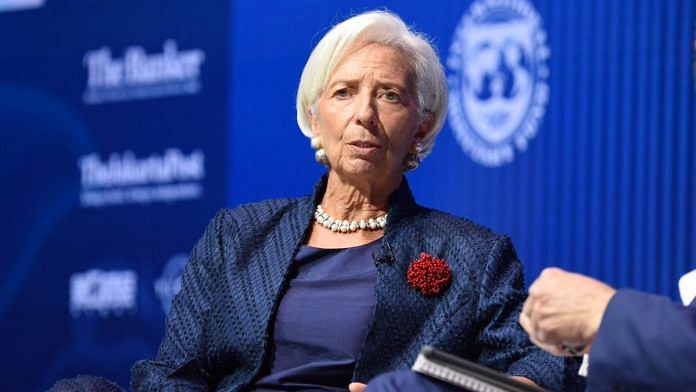Trade tensions, geopolitical concerns, policy uncertainty, high debt levels, financial vulnerabilities & limited policy space are hurting outlook.
Thefinance ministers and central bankers from almost 190 countries who gathered in Bali for the annual meetings of the International Monetary Fund and World Bank drove, I suspect, the final nail into the coffin of the notion of a synchronized pickup in global growth. In a tone that contrasted with the optimism of their spring meetings in April, members of the International Monetary and Financial Committee, or IMFC, listed many fragilities, and cited a set of risks that “are increasingly skewed to the downside.”
Even though the IMFC contains members with opposing views on free trade and responsible economic and currency management, it managed to arrive at compromise language for its common communique at the conclusion of the meetings over the weekend. But the committee failed to go beyond boilerplate phrases when it came to policies, including an agreement on meaningful and coordinated measures to deal with the increasing divergence among advanced economies, as well as steps to ensure that the eventual convergence translates into higher global growth and durable financial stability, as opposed to meaningful risks of recession and unsettling financial volatility.
In the run-up to the meetings, the IMF published updated macroeconomic projections that pointed to somewhat less buoyant growth, despite what I see as excessive optimism in many individual country forecasts — with the notable exception of the US — and more divergence among systemically important countries. This theme is reflected in the IMFC communique. Officials said “the global expansion remains strong,” though they recognized that “the recovery is increasingly uneven, and some of the previously identified risks have partially materialized.”
The less optimistic outlook for the global economy comes with a long list of gathering clouds that were listed not only in the communique but also in virtually every one of the public statements by officials from the most influential countries. I suspect the worries were even more pointed in private. They include heightened trade tensions, ongoing geopolitical concerns, tighter financial conditions that affect many emerging economies, policy uncertainty, historically high debt levels, rising financial vulnerabilities and limited policy space, which could further undermine confidence and growth prospects.
When it came to offering measures to contain these risks, the communique’s drafters found all-encompassing language, such as “we will act promptly to advance policies and reforms to protect the expansion, mitigate risks, rebuild policy space, enhance resilience, and raise medium-term growth prospects for the benefit of all.”
Even more skillfully, they struck a delicate balance between opposing national policy views that have resulted in loud and open conflict elsewhere. This was the case most notably on trade (“We acknowledge that free, fair, and mutually beneficial goods and services trade and investment are key engines for growth and job creation”), and on currency policy (“We will refrain from competitive devaluations and will not target our exchange rates for competitive purposes”).
For the most part, the communique is likely to be a non-event for policy making, and for markets when they re-open for trading on Monday morning.
The outcome of the meeting might have been seen as more positive if markets weren’t undergoing a gradual transition from an overwhelmingly liquidity-driven paradigm to one that is more reflective of the underlying fundamentals. This shift is made more complicated by, in particular, divergence and trade. As such, the IMFC’s public communication will do little to counter the risk that this transition could be accompanied by one that involves greater and periodically more unsettling volatility for financial markets. –Bloomberg






